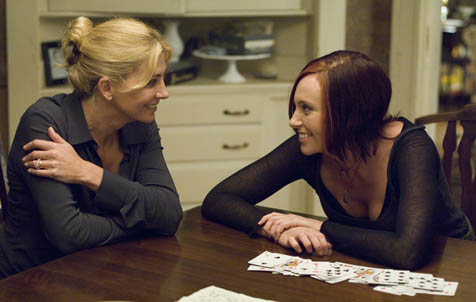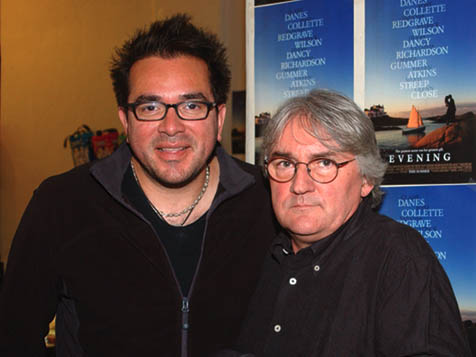Cinematographer- Turned -Director Lajos Koltai Discusses Evening
Roger Durlings Big Pic

Evening is a deeply emotional film based on the beloved novel by Susan Minot, who adapted it for the screen with Pulitzer Prize-winning author Michael Cunningham (The Hours). It deals with the timeless love that binds mother and daughter, seen through the prism of one mother’s life as it crests with optimism, navigates a turning point, and ebbs to its death. Two pairs of real-life mothers and daughters-Vanessa Redgrave and Natasha Richardson, and Meryl Streep and Mamie Gummer-portray, respectively, a mother and her daughter and the mother’s best friend at different stages in life. The rest of the stellar cast includes Claire Daines, Glenn Close, Hugh Dancy, and Eileen Atkins. It is directed by Budapest-born Lajos Koltai, an Academy Award-nominated cinematographer (Malena) who made his directorial debut in 2005 with the uniquely realized Holocaust story Fateless. I recently had the opportunity to chat with Koltai about his latest work.

What was your reaction to the novel? I didn’t read the novel first. I got the beautiful script by Michael Cunningham, who wrote The Hours and he gave me this well-structured script. Michael had gotten the okay from the novelist Susan Minot to make some big changes with the story. The book was too much. It was 30 different characters and more marriages, more kids : you can’t handle all that in a film. Michael did a great job, not just with structure but by narrowing it down so that you still have the same power to it. Of course, I had personal attachment to this story, of somebody saying good-bye to this world. My parents are dead but my grandmother died in my hands and it is something I will never forget. What I put in the film was a personal thing : I thought about my childhood and my sister who is older than me and we had totally different memories about the same thing. And that’s a good way to make a film. That conflict between siblings is in the movie.
This is one of the most remarkable ensembles of actors. How did this cast come about? Vanessa was the first whom I met because the studio liked the idea of offering her the role. She was in London and we met at a hotel. After a while she said, “You know, this is such a great thing that you asked me to do this movie because I love so much your work.” And that’s what I’ll never forget. We had an instant rapport. Then I found Mamie Gummer in an open audition, and I didn’t know at the time she was Meryl Streep’s daughter. Fortuitously, Meryl came because she wanted to work with Vanessa. I had worked with Glenn Close before as a cinematographer, and she agreed to be in the movie as a favor to me. Little by little, the rest of the cast came into place after that.

Your background is as a cinematographer. What did you bring from the world of cinematography to directing this film? The most important thing, I think, was the vision. In movies, you send your message through images. Three things make for a great movie: a great story, great performances, and the images, the vision. You need these elements working together so you can pull it off. Cinematography was my background, more than 35 years behind a camera, always making a vision come to live with the images, the pictures. When you go to see a movie in a theater and it’s dark, you wait for the first image. The image takes you or not. After that, you start to listen to what they are saying, but the first image is key.
Tell me about shooting in Rhode Island. What was special about it? That was the most interesting thing because after they asked me to go out to Rhode Island, I get there and we find this house. Immediately I see the picture exactly as I want to see it in the movie. And you are always looking for some visual background inside you. And so I go out there and I think, “This is it!” The house is just in the right spot, and you can see the sea and the color of the grass, the color of the sky, the wind, everything is the way it belongs in this movie. The first time I explained to the studio how I wanted to do this movie I told them, “I want to put these people in the middle of nature because they belong in nature.” I always wanted them surrounded by foliage and bugs, for example. I always wanted the bugs in there. The bugs are the messengers of love and memory. They come in and out of the windows, as her memory goes. As you recall, there’s a moment that it seems there are no walls in this room anymore, and she’s surrounded by nature. Because her memory is free to roam and it’s beautiful. Newport was very inspiring and key to the story.

The movie goes back and forth between the present and the past. You obviously made some design choices to help us keep track of the chronology. I always pictured Vanessa’s character in bed between the two windows with a big white curtain because I imagined her like in a sailboat of her memories, for her to sail away in. I made the whole room a little bit colorless because there’s not much happening now with her. So, when she starts reminiscing-back to the wedding night-everything is full of color and so full of life.



